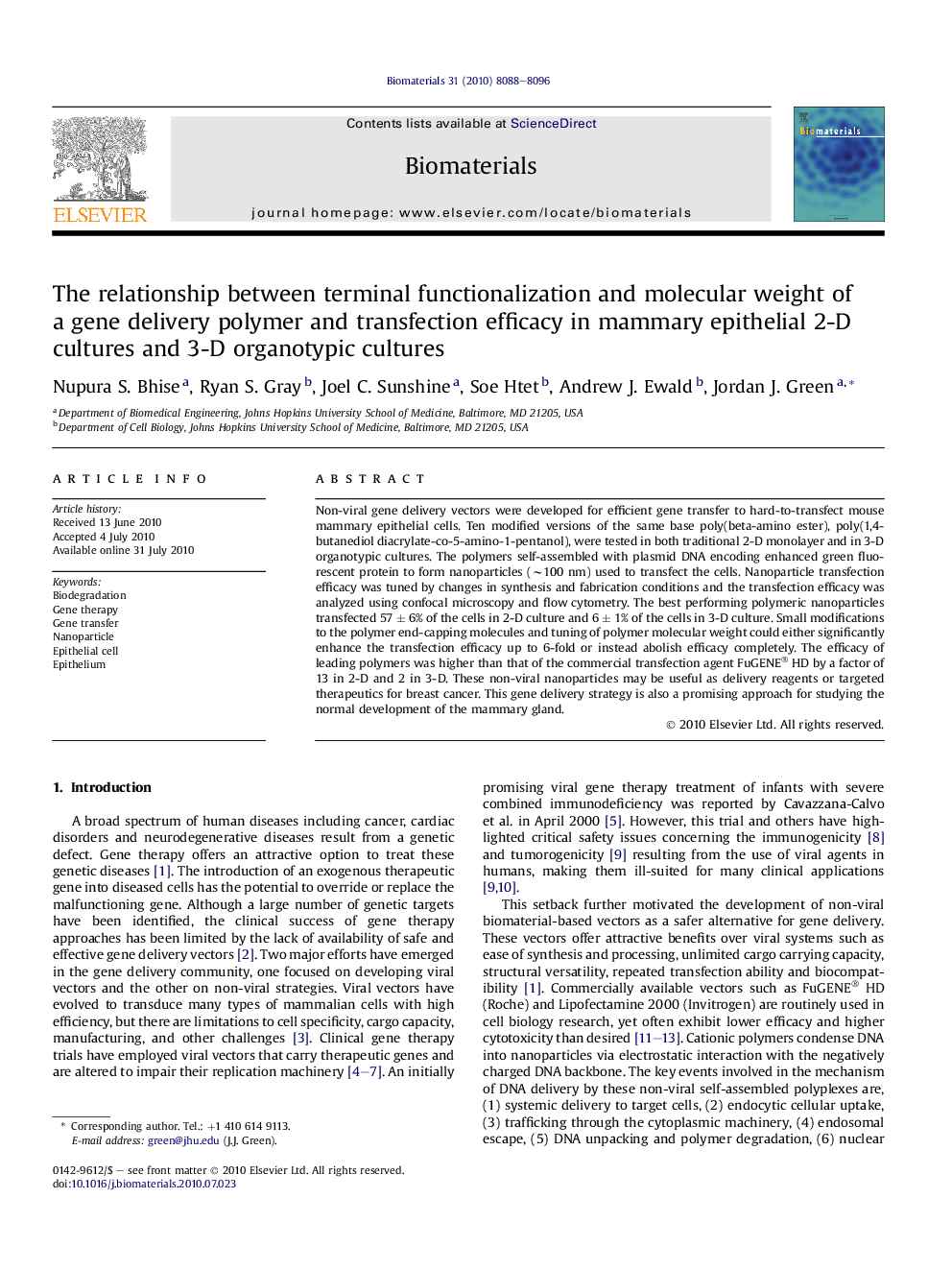| Article ID | Journal | Published Year | Pages | File Type |
|---|---|---|---|---|
| 8065 | Biomaterials | 2010 | 9 Pages |
Non-viral gene delivery vectors were developed for efficient gene transfer to hard-to-transfect mouse mammary epithelial cells. Ten modified versions of the same base poly(beta-amino ester), poly(1,4-butanediol diacrylate-co-5-amino-1-pentanol), were tested in both traditional 2-D monolayer and in 3-D organotypic cultures. The polymers self-assembled with plasmid DNA encoding enhanced green fluorescent protein to form nanoparticles (∼100 nm) used to transfect the cells. Nanoparticle transfection efficacy was tuned by changes in synthesis and fabrication conditions and the transfection efficacy was analyzed using confocal microscopy and flow cytometry. The best performing polymeric nanoparticles transfected 57 ± 6% of the cells in 2-D culture and 6 ± 1% of the cells in 3-D culture. Small modifications to the polymer end-capping molecules and tuning of polymer molecular weight could either significantly enhance the transfection efficacy up to 6-fold or instead abolish efficacy completely. The efficacy of leading polymers was higher than that of the commercial transfection agent FuGENE® HD by a factor of 13 in 2-D and 2 in 3-D. These non-viral nanoparticles may be useful as delivery reagents or targeted therapeutics for breast cancer. This gene delivery strategy is also a promising approach for studying the normal development of the mammary gland.
